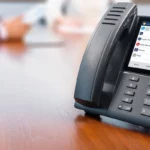Doing things digitally is part of daily life and collaborative working in government plays a key part in this. It’s not only citizens who want to engage with each other in quick, seamless and digital ways. It’s equally important for public sector staff to be empowered to work, interact and engage with each other in digital ways too.
The average employee uses three or more devices and digital channels for communication every day. They have come to expect a consistent experience across multiple devices and multiple platforms. They also expect to be able to move seamlessly from one device to another; without the loss of flexibility or continuity.
Collaboration is hard, but it’s worth it
Promoting collaborative working in government and other public sector organisations has often been very tricky. Attempts to encourage collaboration have not always succeeded well in government. This has largely been due to organisational and cultural barriers, a lack of resources and a history of fragmented and siloed working. These are barriers that are often hard to break down. Think Tanks and a myriad of reports have commented on how the attempt to integrate public services and invent smarter ways of working still have a long way to go. Citizens are still being passed from pillar to post when communicating with government and joined-up ways of working for staff remain very much an aspiration, rather than a reality. If citizens are still not enjoying the benefits of using their preferred choice of communication when interacting with government, public sector staff are also not experiencing the benefits of easy communication and collaboration.
Nevertheless, collaboration in the public sector is an absolute imperative. Research has demonstrated that collaboration is strongly linked to innovation. The Government Innovation Strategy states that public sector excellence relies on “innovation and the judicious implementation of new technologies.”
Let’s be excellent
Innovation cannot happen if public sector staff are finding it difficult to collaborate, work with each other, share ideas, best practice, set goals, agree objectives etc. Not only this, as mentioned before, this will also have a knock-on effect on public services.
So what exactly is collaboration? Bringing people together with different views and creative solutions to spur new ideas and create change and innovation.
The public sector has a fantastic opportunity to do things better and give staff compelling, intuitive and easy ways to work and collaborate with each other. It’s important to arm staff with tools where they can communicate in ways that suit them and in which they use to communicate every day in their interactions outside of government.
How can public sector staff collaborate better?
Legacy systems have limited the ways in which staff can work together and has proved to be an obstacle to productivity and business performance. Telephone calls and face-to-face communication channels have always been the conventional way of interacting in – and with – government. And, although these channels are still used and valued, there are other digital, cheaper and quicker ways for public sector staff to collaborate, especially the individuals who are digitally savvy and who want flexibility and choice. When staff are empowered, daily tasks get simplified and staff are given fresh, modern ways to share their knowledge, ideas and plans.
Digital tools to work across boundaries and silos
This brings us onto a topic close to our business: unified communications. Being able to communicate through multiple channels can greatly enhance public sector innovation in the face of fiscal and time constraints and can eliminate the presence of unsatisfied citizen and staff needs.
Unified communications is a suite of technologies that takes different communication methods and makes them available through a single interface, improving connectivity and collaboration. Redesigning your tools and workspaces with unified communications can boost the energy and productivity of staff and design flexible, engaging “collaboration spaces” where people can get together without disturbing others around them.
Tasks such as brainstorming, virtual meetings and exchanging peer feedback can be improved by implementing unified communications tools. The public sector can also take better advantage of hiring remote or globally dispersed staff as unified communications makes collaborating across boundaries easy.
This collaboration-based suite of technologies holds many benefits for government, from reducing costs, reducing travel and replacing face-to-face meetings with digital collaboration. Not only that, it can minimise or even eliminate time wasted from unsuccessful contact attempts and provide staff the ability to work flexibly.
Public sector organisations need to bring forth a culture of innovation and this will largely depend on the ways staff communicate with each other. Unified communications can generate more creative and collaborative government working environments, delivering fast paced and seamless services that are not only good value for money and meet user needs but also engage, inspire and meet the expectations of public sector staff.
Opus specialises in providing communication solutions for central and local government organisations, ensuring collaboration works within teams, between functions and most importantly for citizens.



